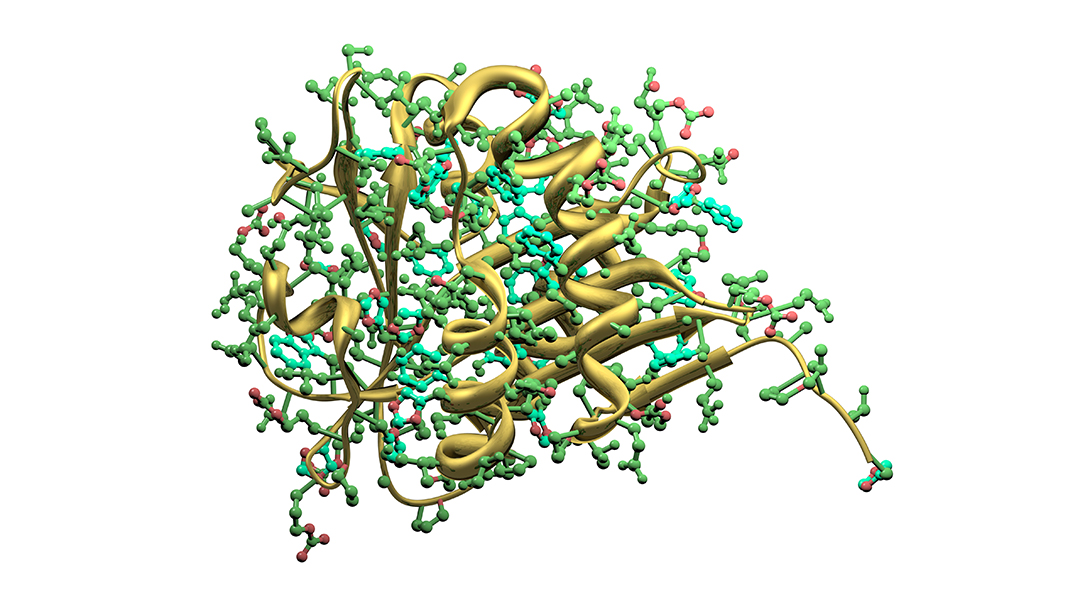For the last few years, computational chemistry has been undergoing unprecedented growth. It has been fueled by impressive advancements in both computing power and methodology and has been closely integrated with fast emerging areas such as machine learning and quantum computing. In the future, applications of computational techniques are expected to expand to virtually all disciplines of chemistry and biochemistry.
One such avenue is the development of artificial enzymes that has been long considered a holy grail in chemistry. Nature has devised numerous specialized enzymes to catalyze more than 5000 biological processes at fast rates with tremendously high efficiency and selectivity. However, these enzymes also possess certain shortcomings, such as low tolerance to experimental conditions and high cost of preparation and purification, that are not ideal for their translation to industrial applications.
Thus, there is a tremendous interest in the design of small molecule mimics of natural enzymes called “artificial enzymes” that possess the same capabilities as natural enzymes without the same limitations. The hope is that they will not only help us understand the complex functioning of enzymes, but will create a new generation of biosensors and medical devices, as well as a means of efficiently producing fuels and developing green and sustainable chemistry practices.
Before this can happen, a deeper understanding of the functioning of both enzymes and their existing synthetic analogues is required. However, structures of short-lived transition states and intermediates formed during their reactions cannot be readily determined through existing experimental techniques. In this respect, computational techniques can complement experiment to provide both structures and energies of these structures to gain better insight into the inner workings of these enzymes so that scientists can better understand and develop their synthetic counterparts.
To this end, in a recent study published in WIREs Computational Molecular Science, Dr. Rajeev Prabhakar of the University of Miami and co-workers explore the applications of a plethora of innovative computational methods on the functioning of natural enzymes and synthetic analogues. “An effective fusion of the knowledge concerning the catalytic activities of both enzymes and their analogues will not only help us derive fundamental principles of these reactions, but also pave the way for the designing of more efficient small molecule catalysts,” stated Prabhakar.
In particular, they have used two chemically promiscuous mono- and binuclear metalloenzymes (insulin degrading enzyme (IDE) and glycerophosphodiesterase(GpdQ)) and two small molecule synthetic analogues as model systems. These systems catalyze two major fundamental reactions in nature — peptide and phosphoester hydrolysis — that are involved in several critical biological, chemical, and industrial processes, including cell death, DNA repair, protein engineering, proteomics, remediation of insecticides and nerve agents, therapeutics, and ethanol production.
“IDE and GpdQ are ideal systems to investigate these reactions due to their extraordinary properties: IDE possesses remarkable versatility and degrades several critical biological substrates such as insulin, amyloid beta, amylin, and glucagon. GpdQ also displays exceptional substrate promiscuity by hydrolyzing all three types of phosphoesters (mono, di and tri) including several synthetic organophosphates. On the other hand, their structurally simpler synthetic analogues, polyoxometalates (POMs), and 1,4,7,10-tetraazacyclododecane (cyclen), also lack substrate specificity and degrade a wide range of biomolecules such as albumin, myoglobin, lysozyme, DNA and RNA,” explained Prabhakar.
These computational studies have elucidated the roles of several critical factors such as substrate binding, coordination flexibility, metal centers, and ligand environment in the functioning of these catalysts. This information is required for the design of efficient and selective artificial enzymes.
“Our studies successfully addressed many outstanding issues concerning their promiscuous activities,” said Prabhakar. “It is clear that the existing artificial enzymes still require significant upgrading in their chemical properties to match the exceptional reactivities of their natural counterparts. Additionally, theoretical methods need further improvement to simulate experimental conditions as accurately as possible.”
Written by: Rajeev Prabhakar
Research article found at: Q. Hu, et al. WIREs Computational Molecular Science doi.org/10.1002/wcms.1466

















